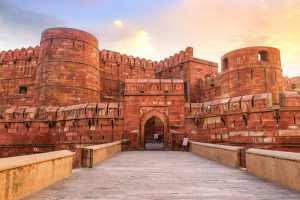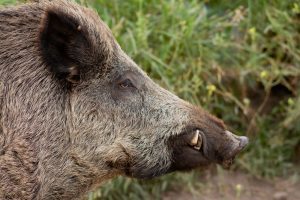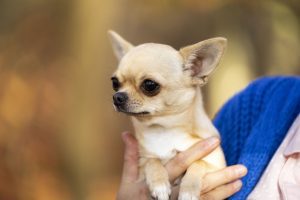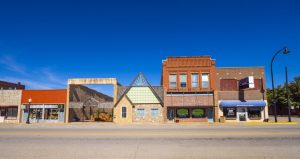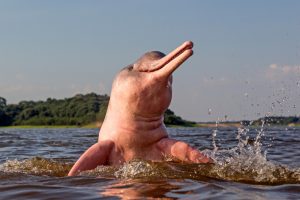The Plains Indians used three methods to hunt bison (often referred to as buffalo), and those included buffalo jumping, the buffalo impound, and horse-mounted buffalo jumping.
These were the primary methods of buffalo hunting throughout the late 1700s and through the late 1800s.
Most buffalo hunting strategies employed by the Plains Indians and indigenous populations were dependent on their region and geography, although largely the methods were very similar.
The Plains Indians hunted the buffalo through three methods that included the buffalo jump, the buffalo impound, and the horse-mounted buffalo jumping.
The buffalo jump entailed a strategy where buffalo were lured over a cliff until they fell to their death.
The buffalo impound was a mass slaughter, and the horse-mounted buffalo jumping included bows and arrows.
Table of Contents
Where did the Plains Indians hunt buffalo?

The region where the buffalo hunting occurred the most ranged all the way from Canada through the United States and to the Gulf of Mexico.
There were also many buffalo hunts in the Rocky Mountains and east towards the Mississippi River.
This hunting occurred by the Plains Indians, the indigenous population that most people think of when they conceptualize Native Americans in Native American and Native Canadian culture.
Buffalo hunting was a means of survival for the Plains Indians for thousands of years until the animals began to near extinction.
In the early 1800s, some records indicate there were as many as 30 million buffalo along the Great Plains.
For many tribes, the meat of the buffalo was the only food they wanted, and any other meat was unacceptable to their eating and food preparation rituals.
There are many locations where buffalo jumps and buffalo hunting occurred, but not many have been preserved in modern times.
One location has become a United Nations World Heritage Site. That location is found in the Porcupine Hills of Alberta, Canada, and is called the Head Smashed In Buffalo Jump.
What was the purpose of Native American buffalo jumps?
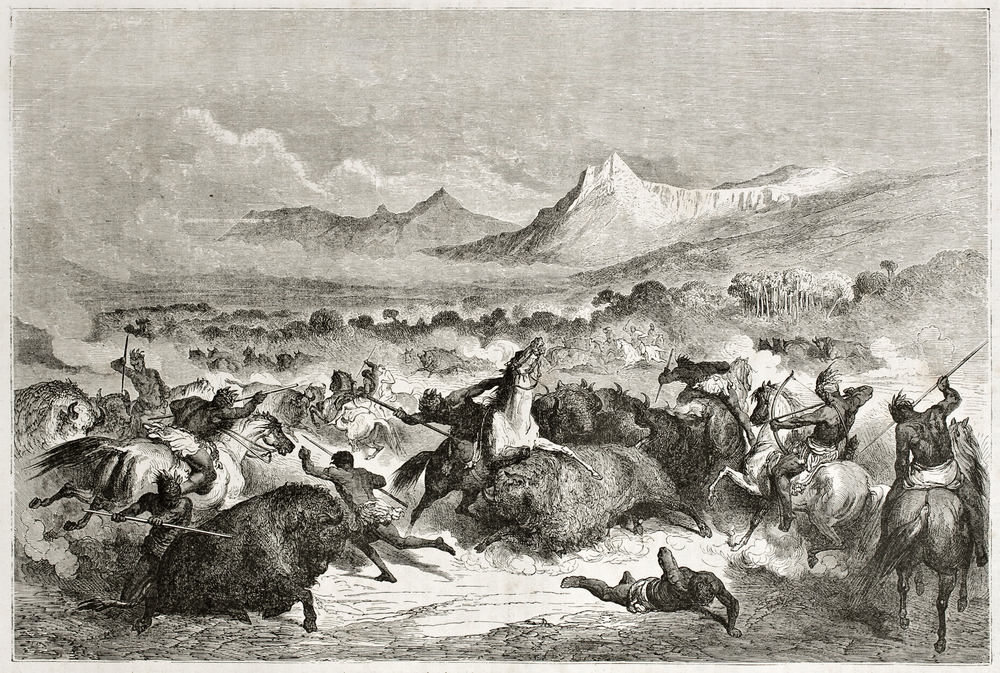
The primary purpose of the buffalo hunts conducted by the Native Americans was for food and in some cases trade.
Buffalo hunts were an important food source until the buffalo and bison population began to dwindle near the end of the 1800s.
Additionally, buffalo were needed in order to maintain fur trading.
Commodities get traded when the product is in plentiful supply, and in the late 1700s and the first half of the nineteenth century, the buffalo and bison population met that criterion.
It was estimated that the herds at the time had tens of thousands of buffalo.
But, by the end of the nineteenth century, the buffalo herds would be in the hundreds, with herds in some cases being even fewer than 100 buffalo.
To the Native Americans however, this was their way of life, and when the buffalo population diminished, some Native Americans would begin to starve.
They needed the buffalo for food and also for shelter, clothing, and even tools made from the bones of the animals.
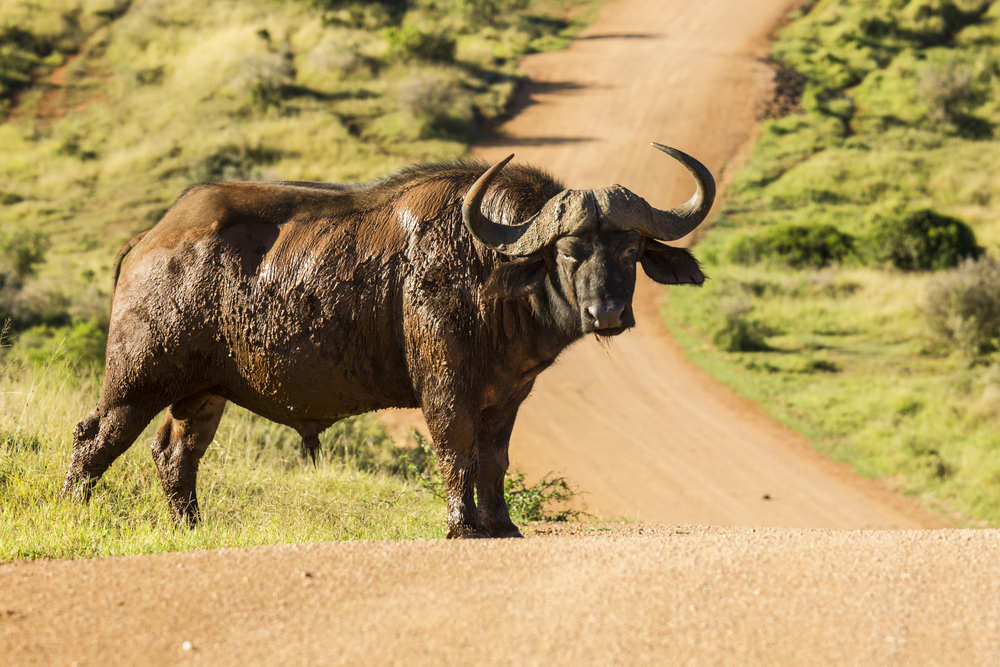
Were the buffalo hunts contentious?
Anytime there is a fight for food, tensions are going to be high. The Native American people are hierarchical in nature, and the hunts were said to be a source of constant tension between them and white settlers.
The governments at the time, in both Canada and the United States, were heavily criticized by them, and still are today, over their use of the land during this period.
The hunts were organized and run by the Native Americans, and as food sources got lower, tensions mounted.
Prior to that, the people sent to the hunt would be chosen by the leadership of the tribes based on skill and merit.
Specific individuals would be selected for specialized roles in the hunt, and it would bring them much esteem within the tribe.
Eventually, tensions would result in treaties with the governments, which may or may not have been considered favorable to the Native American people at the time.
However, they didn’t have a choice, the food supply was low.
What was the buffalo jump?
The buffalo jump was a buffalo hunting method where a large group of people would hunt a large group of animals.
This method involved luring buffalo to a cliff where they would jump or fall and die. Then, the buffalo would be cleaned and used for food, shelter, clothing, and trade.
The jump would involve one man being chosen for a position called the runner. The man would be dressed in the hides of the buffalo and be the buffalo decoy.
Being selected for the job of the runner was considered a tremendous honor, as it was a job given to fast men and recognition for great skill and talent.
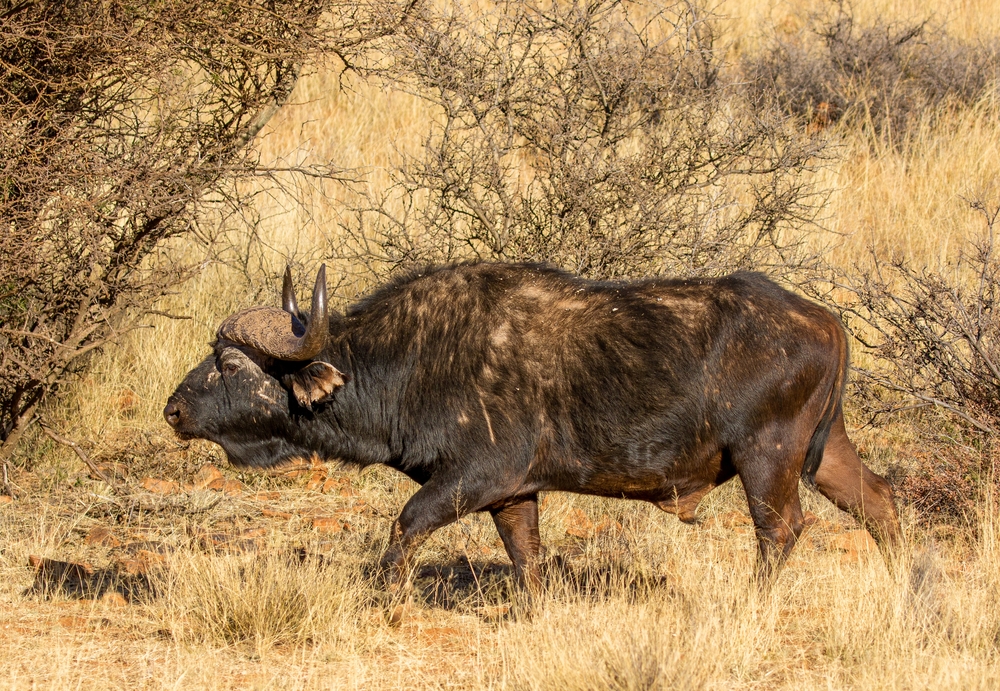
When the runner would approach the buffalo, he would make loud screams and calls in order to lure them towards him.
Here is where his fast running would be necessary, as he would have to move out of the way of the stampede that would result.
While the runner was doing that, there would be a second group of runners that would be disguised as wolves, the hunters of buffalo, who would run behind the herd to prevent them from turning around and running away from the cliff.
What was the buffalo impound?
The buffalo impound was a kind of hunt that was slightly more violent, where bows and arrows were used.
Again, the animals would be lured away to a region of land where they would be killed. The impound would be a makeshift wall made by the Native Americans.
The walls would be as high as 15 feet, and there would be a 100-yard chute going towards the wall that the buffalo would be lured into.
The Native Americans would bang their clothing on the ground to get the herd to come near the chutes until the buffalo went in.
When the buffalo were inside the impound, they would be killed with arrows.
This type of hunt would occur when the Native Americans did not have any cliff to use for a buffalo jump.
It would also yield more meat in some instances, although the buffalo jump could be just as lucrative.
If one jump could kill 50 buffalo, it would provide as much as 20,000 pounds of meat.
What was horse-mounted buffalo hunting?
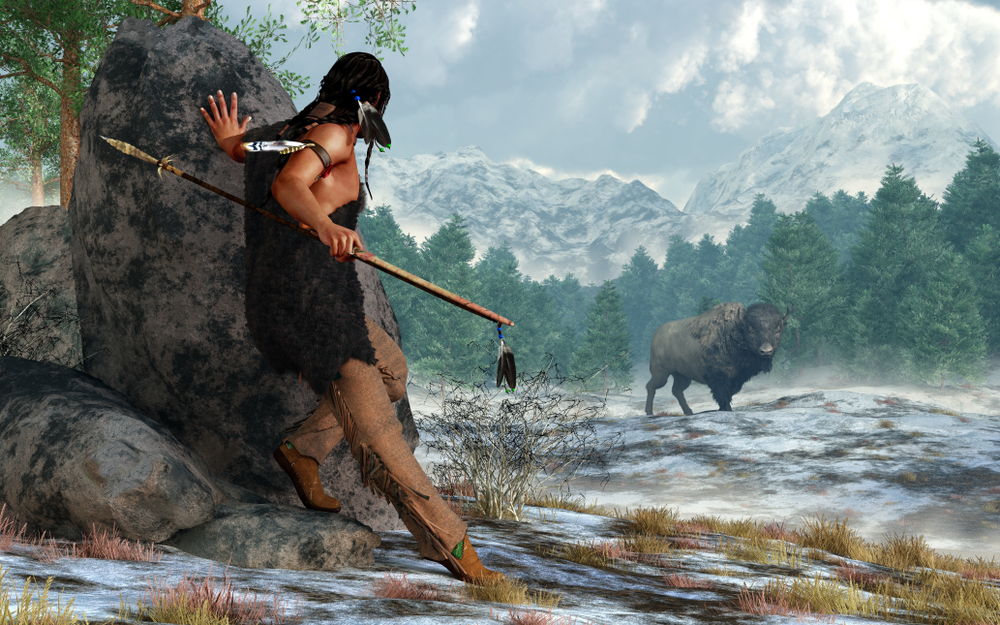
Horse-mounted buffalo hunting would come later, and into the latter part of the nineteenth century when buffalo hunting was less common.
This kind of hunt was much easier for the Native American people because they didn’t have to run. Bows and arrows would be used, and in some cases, a lance.
At the time, firearms did exist, but they would never be used for hunting this food by the Native Americans.
The primary reason here was speed, which was critical to the success of the hunt. Having to reload a gun in the middle of a hunt was not practical and could ruin the entire mission.
Additionally, Native American hunters would have their own arrows when they fought or hunted.
When an animal was shot with an arrow, it would be identified by the hunter’s arrow, significant because the hunter would get the hide and the best meat from that kill.
The win would be significant for the hunter and an important part of the ritual and culture of a day where approximately 100 hunters would hunt up to 500 buffalo.
What happened after the buffalo hunt?
After the buffalo hunt, the buffalo would be cleaned and consumed or sold for trade. It was also used as clothing, and the bones from the buffalo would be used as tools.
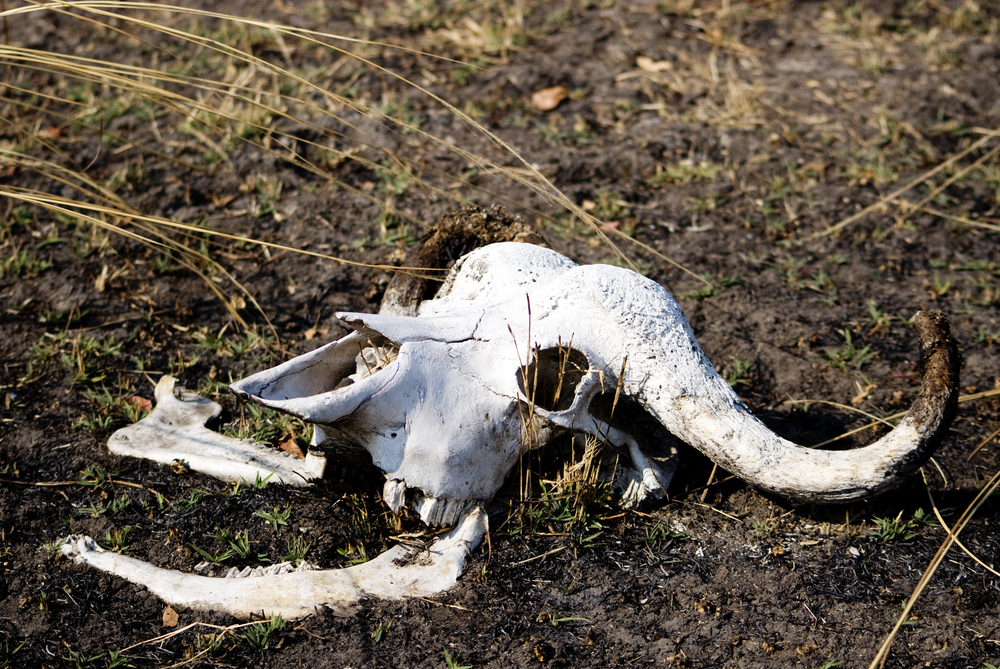
Every single part of the animal would be used for something.
Organs from the animal, such as the liver and the brains, would be eaten raw, whereas other parts of the animal would be boiled.
Pemmican was and still is a very popular buffalo or bison dish. This is a dish where the meat is dried and mixed with berries and melted fat to be served as something that today is said to taste comparable to beef jerky.
The hair of the buffalo would be used to make rope, and its horns would be used in the kitchen.
Even the hooves of the buffalo would be used in the kitchen, while the sinewy parts of the buffalo would be used on the bowstrings for arrows that would ultimately kill more buffalo.
For clothing, it would take as many as 20 buffalo hides in order to create one coat or covering for the winter.
What made the buffalo population shrink in size?
The buffalo population began to shrink considerably when horses were brought into the hunt.
Prior to that, only 50 to 100 buffalo could be killed at a time from a population of approximately 30 million.
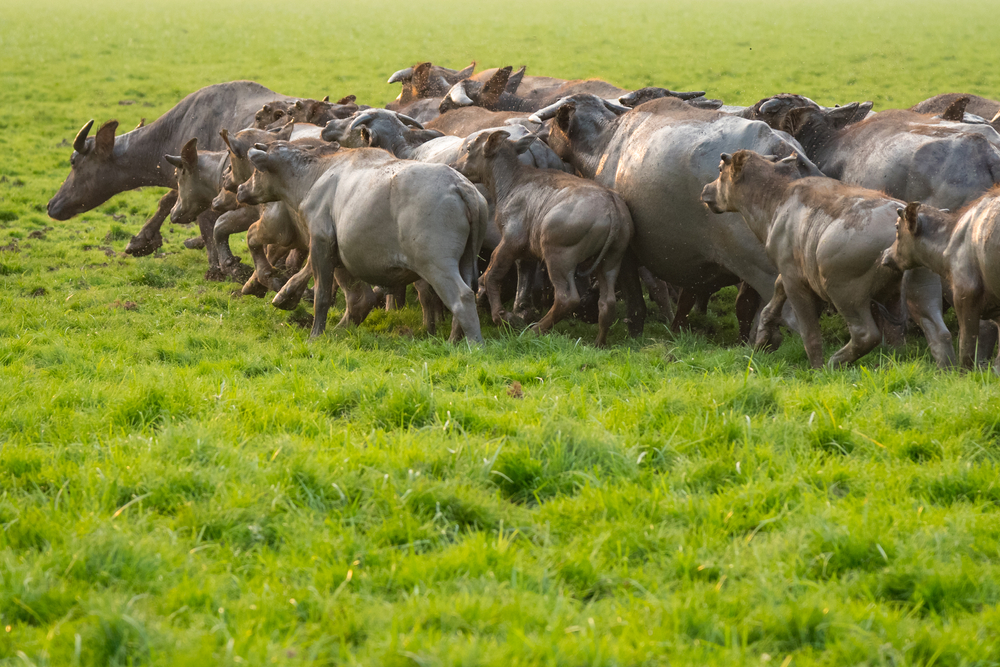
After the horses, industrialization from railways and larger-scale hunting began to kill them in larger numbers.
New laws to have buffalo exterminated were also a part of the buffalo population shrinking, and the price of buffalo grew.
As the prices grew, laws about regulating the kills did not, and the buffalo began to disappear.
Today, activists do work to keep the buffalo alive.
Many herds of bison are protected in the United States, while others were moved to Canada.
In Canada, the buffalo have been bred with bison to keep both populations going. Still, the species has neared endangerment and is still watched, as buffalo farming is an industry that is ongoing today.





